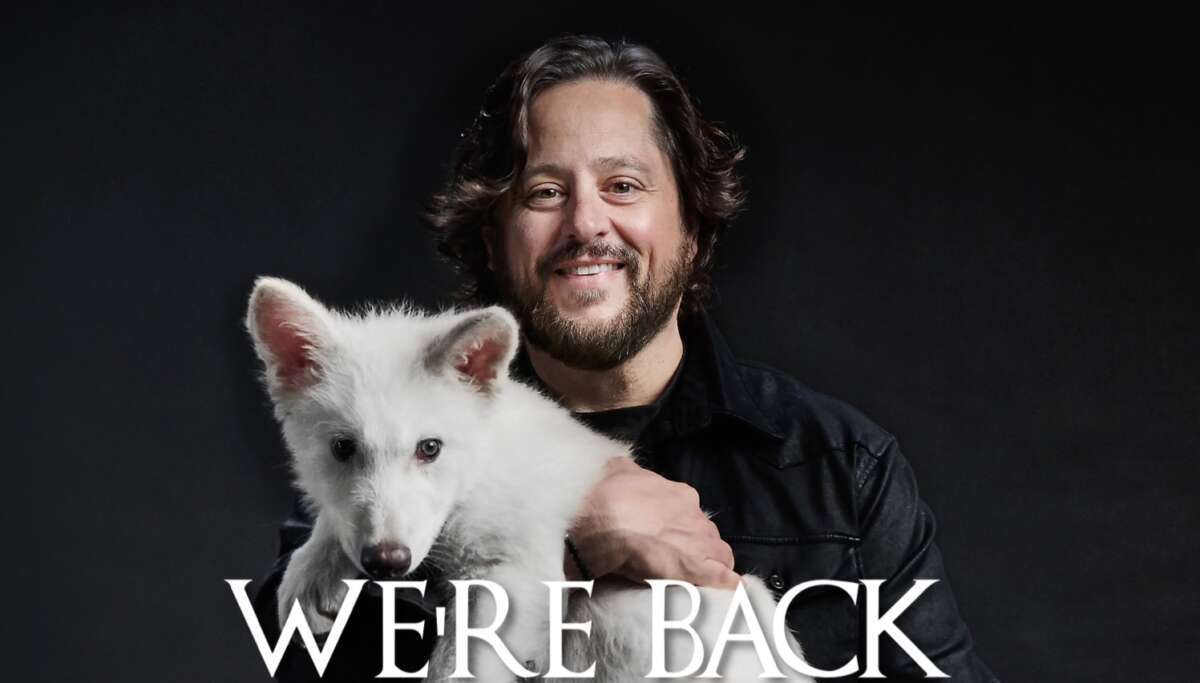Earlier this week, we all likely all saw two adorable white wolf puppies in the arms of a caretaker just yipping away. Named “Remus” and “Romulus” for the human twins who were suckled by a she-wolf and who went on to found the ancient city of Rome (or at least, Romulus did), we learned that these wolf cubs were actually dire wolves, and the first to be born after an absence of over 10,000 years! As the story progressed, we learned that in fact, the cubs are now over six months old. A Dallas-based company named Colossal Biosciences was involved in the ground-breaking work of mapping the genome of a species of dog long extinct using scattered scraps of DNA and then, using CRISPR, manipulating missing genes and fertilizing the eggs. Then, as one dug deeper, he or she learned that there were actually three cubs and not just two born (the third being Khaleesi who unlike Remus and Romular is a female. If the cubs could speak, they might very well say “We’re back!”
Because I write occasionally about DNA and science, I wanted to study and report on this engineering feat Colossal granted me the opportunity to access more of their files than were originally published, and here is what I learned.
WHAT WERE DIRE WOLVES?
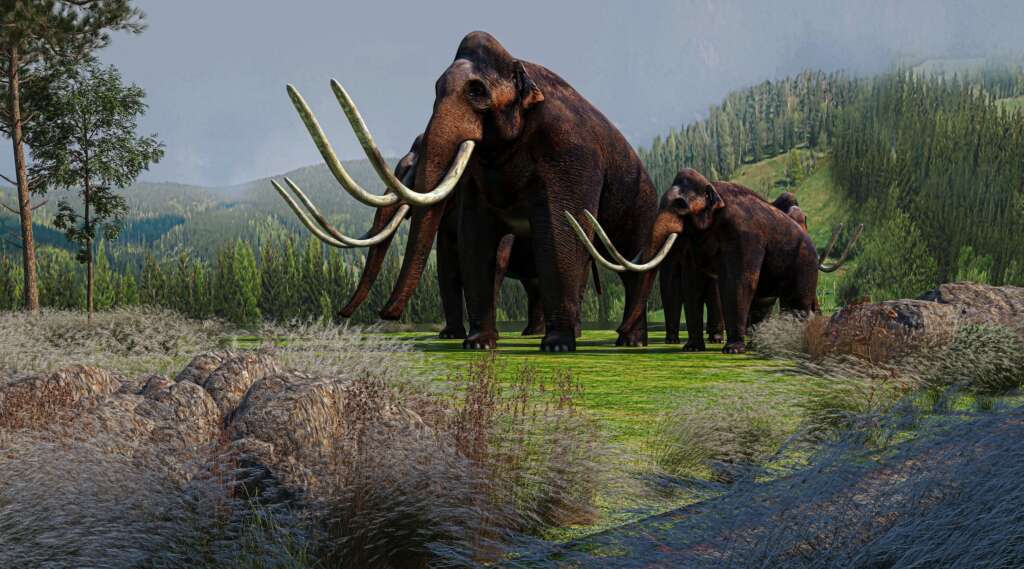
Dire wolves originally lived during the early Pleistocene epoch. Glaciers moved south as temperatures fell and then receded back to their womb as the mercury subsequently rose during this period. Wildlife was hunted by man as well as beast who also inhabited the land. During the Pleistocene epoch, many mammals similar to what we have today roamed a continent that resembles modern America. There were elephant- like mastodons and woolly mammoths. Saber-tooth cats called smilodons and giant ground sloths were common as was the arctodus which is the name for a large, short-faced bear. Also, deer, bison, coyotes and wolves (including the dire wolf.) Dire wolves appear to have been strictly New World creatures, and there is a disagreement among scientists concerning the time period that they first emerged. According to the National Park Service:
“American Paleontologist, Joseph Leidy, named this species in 1858 from these fossils along with some others from Nebraska. The Latin name for Canis (Aenocyon) dirus translates to “terrible wolf” or “awful wolf” The oldest record of the dire wolf dates to 250,000 years ago and they became extinct approximately 10,000 years ago.”
Their range included the forested mountains and grassy plains of North America and the Savannahs of South America. The fact that their remains have not been discovered in colder climates accounts for the difficulty in providing a comprehensive genome because the DNA is more easily corrupted in sub-Arctic climates. Yet, Colossal claims to have recreated the complete genome of the dire wolf though not everyone agrees.
Dire wolves were considered to be apex predators and their diet would necessarily require large amounts of protein, mostly achieved by feasting on deer, elk, caribou and small prey. Because they were thought to be pack animals even as wolves are today, they are portrayed as such in Game of Thrones and likely hunted in packs before their extinction. Additionally, they may have assumed the role of scavengers on other occasions when larger game was not plentiful.
HOW DID DIRE WOLVES DIFFER FROM WOLVES TODAY?
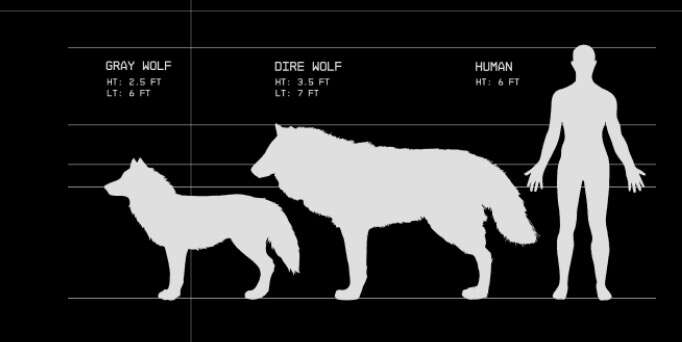
Almost everyone agrees that dire wolves were larger than modern day wolves. Modern gray wolves weigh fifty to one hundred pounds. Add another fifty pounds to approximate the weight of the dire wolf. Then again, all things being equal, the dire wolf’s bite grip was likely much more powerful than contemporary wolves and the teeth of the dire wolf (particularly the molars which are used to crush bone) were larger as well, based on the fossil record. This is important because those ecosystems where dire wolves proliferated are those that had larger animals than otherwise might be expected.
There is no suggestion that the extinct dire wolves were white to the best of my knowledge. There are white wolves today (e.g., Canis lupus arctos) but animals generally have fur covering that helps them blend into their environment. Dire wolf fossils have been uncovered in Canada, but the majority of them have been found in subarctic or temperate environments rather than further north. The reasonable conclusion would be that their fir coloring would be similar to the gray wolf but genetics also plays an important role here so one cannot be sure.
As the primary food source of the dire wolves dwindled, so did the numbers of the wolves. It is evert similar to the prey-predator cycle one learns about in college. In this case, the wolves had to compete with other predators, particularly man. The need for a particularly high protein diet left the dire wolf in particular distress.
WHAT IS CRISPR?
CRISPR stands for Clustered Regularly Interspaced Short Palindromic Repeats. That term does more to confuse people than the acronym does. But the CRISPR process is similar to a doctor in a clinic or a surgeon in an operating room. Sometimes she must remove dead skin such as burned tissue through debridement. Sometimes she must regenerate tissue, perhaps using stem-cell therapy. In other cases, an organ (such as a urinary bladder) must be crafted out of bowel if the patient’s bladder was removed for cancer. So, surgeons snip and slice at the macro level. CRISPR allows a researcher to snip off an individual DNA sequence and simply remove or edit it on a micro, almost nano level. It is like the <search> and <replace> command on your word processing program. Let’s say you want to remove a word (or a person’s name) from a document. You search for that word/name and delete it. But let’s say you spelled a word incorrectly in a document. You can set your program to search for the wrong spelling and replace it with the correct spelling. In a very basic sense, this is what CRISPR does. If we want to address male pattern baldness (MPD), we can search for the gene that causes it in a person’s DNA and using CRISPR, replace that gene with one that does not allow MPD. Future applications for CRISPR might deal with repairing oncogenes or those genes that leader to cancer, such as the BRCA gene.
THE PREPARATION PROCESS

On the surface, the comparative morphology or taxonomy between the two predators suggested to early researchers that dire wolves were most closely related to the present-day gray wolves. In fact, they do share 99.5% of their DNA code with the gray wolf according to Colossal Biosciences. Chimpanzees, however, are 98.8% similar to Homo sapiens, so a percentage point (or less) can make a big difference. Still, there are enough remaining questions about their evolution to suggest that at one point they may have been cousins to African jackals. Alternately, there is the possibility that they also are distant relatives to the Eucyon,
“an extinct genus of small, omnivorous canids that lived in North America during the Miocene,”
or the Xenocyon (strange dog) of the Old World. The aDNA of the dire wolf which represents “ancient” DNA was collected from the bones, teeth, mummified tissues and hairs, and fossilized stool droppings (i.e., coprolites) of the remains of long deceased dire wolves. The La Brea Tar Pits in Hancock Park of Los Angeles has numerous remains of this animal, though unfortunately, the aDNA has been corrupted and lost, most likely because of the chemicals used to separate the fossils, themselves, from the asphalt. The aDNA used to create Romulus and Remus and Khaleesi came from “a tooth from Sheridan Pit, Ohio, that is around 13,000 years old, and an inner ear bone from American Falls, Idaho, around 72,000 years old” according to CRISPR Medicine News.
GAME OF THRONES

The highly acclaimed HBO television series “Game of Thrones” based on George R.R. Martin’s “A Song of Ice and Fire.” With fifty-nine Emmy awards and eight Screen Actors Guild awards, GoT has an interesting bestiary, or selection of animals, both real and mythological that appeared regularly during the eight seasons of production. The episodes featured the familiar eagles, bears, ravens and lions of our age, as well as exotic griffins, dragons, white walkers and unicorns. It also included the dire wolf. Each species of animal was chosen to brings something specific to the kingdoms and the plot. The author and screenwriters included the dire wolf because the members of the wolf’s family then as now was close, supportive of each member as well as protective of its kin. The Stark family stars in the series and each member of the family has a specific wolf (e.g., Ghost, Nymeria, Grey Wind and Lady) of their own. Wolves are tenacious creatures capable of thriving in the unforgiving climate and terrain of the far north, and they personify the traits of the Stark lineage. By using dire wolves, the writers and producers were able to tap into feelings of myth and magic giving the series an preternatural quality to it. It is said that “the deaths of the wolves often align with pivotal moments in the lives of the Stark children, signaling the loss of innocence, betrayal, or drastic change.1” This sense of foreshadowing also lends itself well to the story.
NEXT
The second stage was as challenging as the first.
“The birth of dire wolf pups proves the efficacy of Colossal’s de-extinction protocols and the feasibility of creating a standardized toolkit for de-extinction. The dire wolf pups set the record for number of precise genetic edits in any living species. The company performed a record 20 precise edits2 to the genome, all modifications derived from analysis of the dire wolf genome with 15 of those edits being the exact extinct variants. Together these edits contribute to a larger, stronger body and a longer, fuller coat with light pigmentation.
To de-extinct the dire wolf, Colossal:
- Extracted and sequenced ancient DNA from two dire wolf fossils;
- Assembled ancient genomes from both, and compared those to genomes from living canids including wolves, jackals, foxes, and dholes;
- Identified gene variants specific to dire wolves;
- Determined that dire wolves had a white coat color, and long thick fur – aspects of the dire wolf phenotype that were unknowable from fossils and consistent with animals that lived during cold periods of the Pleistocene ice ages;
- Performed multiplex gene editing to a donor genome from their closest living relative, the gray wolf, resulting in edits 20 sites in 14 genes with 15 of those edits being extinct variants;
- Screen edited cell lines via whole genome sequencing and karyotyping;
- Cloned high quality cell lines using somatic cell nuclear transfer into donor egg cells;
- Performed embryo transfer and managed interspecies surrogacy; and,
- Successfully birthed an extinct species.
According to Colossal Biosciences, the edited DNA was inserted into a dogs egg (presumably fertilized in vitro) and then emplanted into another set of dogs who served as surrogates. At that point, dogs were monitored until term when the pups were delivered via C-section.
“Colossal pioneered a method to extract rare cell types, including pericytes and Endothelial Progenitor Cells (EPCs), from blood samples, and optimized techniques to gene edit and clone these cells. This breakthrough in isolating endothelial cells from various animals augments the potential to conserve and possibly resurrect a vast array of endangered species using non-invasive blood samples.”
As a result, Colossal was able to achieve live pups as described below.
ROMULUS AND REMUS
Romulus and Remus (both males) were born on October 1, 2024. A third pup was delivered on January 30, 2025. The wolf pups receive six pounds of deer, beef and horse meat a day with a special formula of dry food. Eventually, live prey will likely be introduced to their enclosure, though the literature from Colossus is not specific on that point. They live on a 2,000 acres preserve at an undisclosed location in the northern continental U.S. bounded by a nine-foot fence. The site was chosen based on its similarity to the Pleistocene epoch’s hypothesized topography, though Colossus has made “slight modifications” to the site for the safety and security of the wolves and the site, itself.
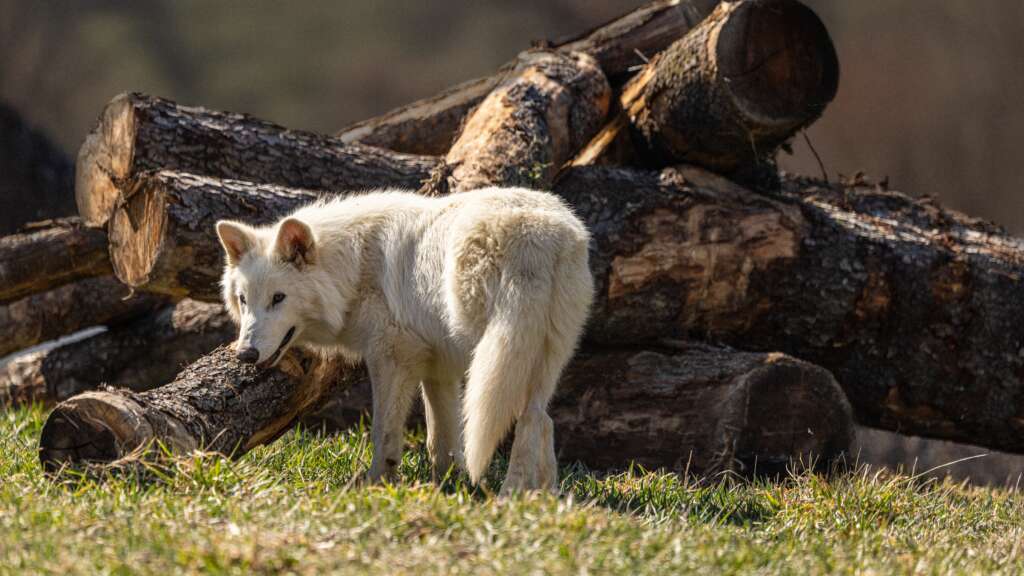
They plan on future projects including preserving the endangered red wolf from extinction (they have delivered four red wolf pups using their method) and re-introducing the woolly mammoth.
ARE THESE TRULY DIRE WOLVES?
Scientists are divided, with some shaking their head “No” and others yelling “Fraud!” But others are more accepting. The only way to have a truly one hundred percent dire wolf (or woolly mammoth for that matter) is to have a viable, fertilized egg of a dire wolf or mammoth. But that is impossible. Yet, these pups do have the DNA of dire wolves. So, to me, this question is part philosophical as much as scientific.
In philosophy, students study an exercise called the “Ship of Theseus.” Theseus was a famous warrior in ancient Greece who slew the minotaur. According to the scenario, after Theseus departed this life, his ship was discovered, and some entrepreneuring mortals tried to make a tourist attraction out of it by restoring it. But it was quite a task. The keel was completely rotted as were most of the frames. The ship’s rutter was broken into pieces and needed to be replaced, and many of the deck timbers were missing and the main mast was cracked. Lastly, the investors learned that the canvas sails were no longer salvageable. The question then after replacing almost the entire ship was whether and in what way was it still the ship of Theseus?
Cheetahs have what is called low heterozygosity and consequently high homozygosity. What this means is that the entire species is vulnerable being wiped out by the same virus. The entire species is inter-related. In that case, would they be gone forever? Theoretically no, because we have cheetah DNA. But to create a cheetah from scratch would not be authentic to some skeptics.
On the other hand, if we use “designer genes” to build an extinct species back with an eye to recreating as much original detail as possible, then isn’t it a good thing (depending on out motives, of course?) Charles Darwin and Jeff Goldblum would say “No,” but there are likely many arguments in favor of doing so. Haven’t we done so with domestic dogs? Who is to say it is wrong to design miniature schnauzers or German Shepherds? when these breeds did not exist from the beginning? Or Bengal cats? Would we not recreate bison if the need presented itself? Is this even a good idea? Only time will tell.
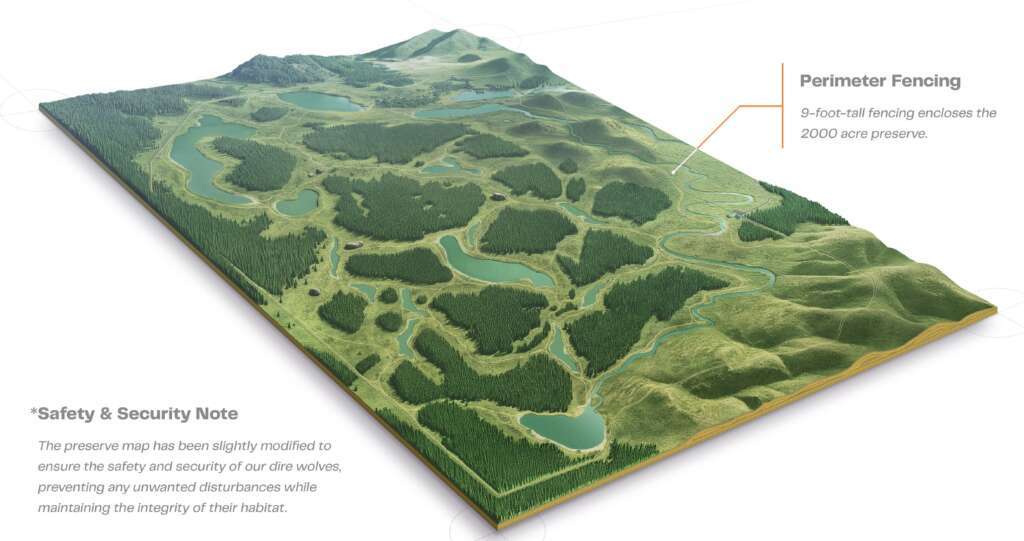
FOOTNOTES
1Apple AI.
2“The 20 gene edits across 14 distinct loci as targets for dire wolf de-extinction, focusing on the core traits that made dire wolves unique including size, musculature, hair color, hair texture, hair length, and coat patterning.” CRISPR, op. cit.
Unless otherwise noted, all photos and graphics courtesy of Colossal Biosciences.
